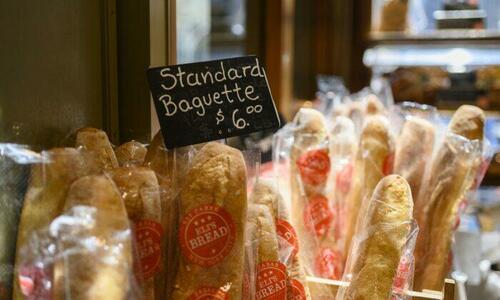The Real Cost Of Inflation For Most Americans
Authored by Petr Svab via The Epoch Times (emphasis ours),
The June inflation figure of 9.1 percent, up half a percentage point from last month and the highest since 1981, doesn’t tell half the story of how expensive life has become for Americans. The overall figure hides the fact that not all prices have risen uniformly and that products that have become especially expensive also happen to be the ones people usually can’t do without, such as food, fuel, and energy, according to the Consumer Price Index (CPI) data published by the Bureau of Labor Statistics (BLS).
Among foodstuffs, margarine and eggs prices hiked the most over the 12 months ending June, up over 34 and 33 percent respectively. Trailing behind were butter (up over 21 percent), flour (up over 19 percent), and chicken (more than 18 percent). Milk and coffee were up about 16 percent.
Regular gasoline hiked more than 60 percent, diesel about 76 percent, and fuel oil, which many Americans use to heat their homes, nearly doubled in price. Natural gas went up over 38 percent and electricity nearly 14 percent.
The White House, through President Joe Biden’s Twitter account, called the inflation figures “not acceptable,” but “outdated” on July 13, noting gasoline price has declined about 40 cents per gallon (about 8 percent) over the past 30 days.
The products with the most prominent price hikes tend to also suffer supply issues. Gasoline production is constrained by the policies of the Biden administration and the financial elites more generally as part of their efforts to curb carbon emissions. Egg production has been constrained by the avian flu outbreak that cut the number of laying hens by about 8 percent in recent months. Grain production has been hit with sky-high fertilizer prices and herbicide shortages. Higher grain prices, in turn, not only show up in bakery goods and flour, but also in animal feed, which then hits meat and milk prices too.
Normally, consumers respond to higher prices by tightening their belts—consuming less—which in turn leads prices down. But because of the lavish federal spending packages during the COVID-19 pandemic, however, consumer demand has been artificially boosted. Prices will have to go up relatively steeply for another year or two before the productivity of the economy catches up with all the newly printed money, some economists have predicted.
Read more here…
Tyler Durden
Thu, 07/14/2022 – 19:40

